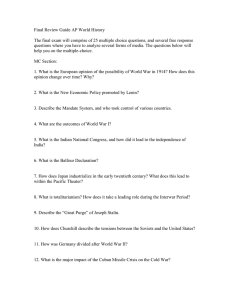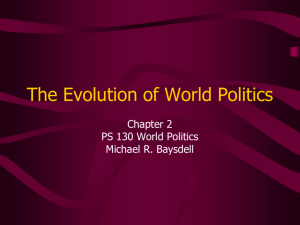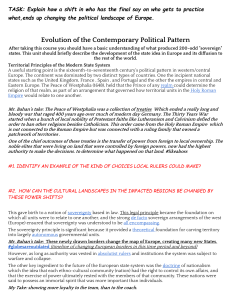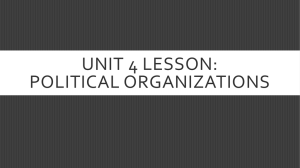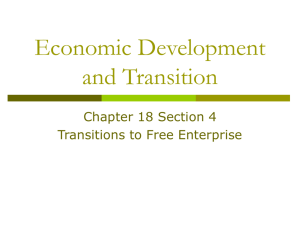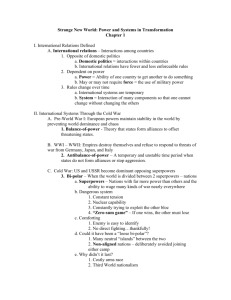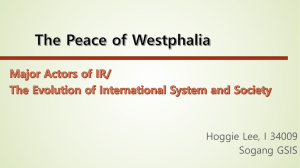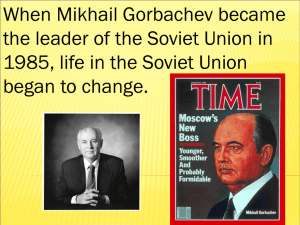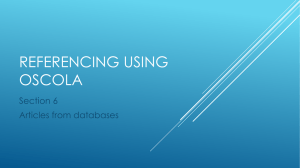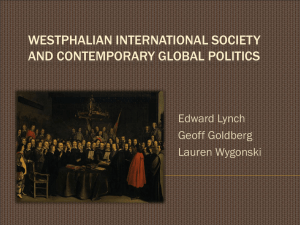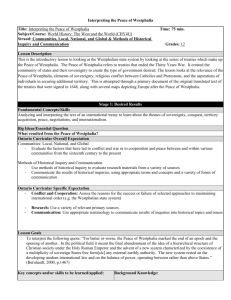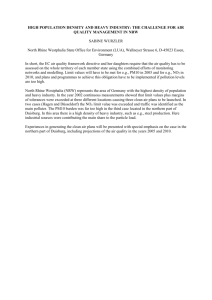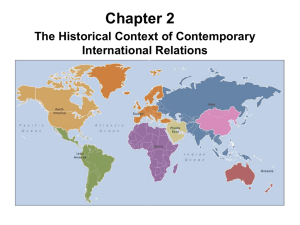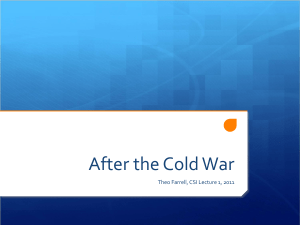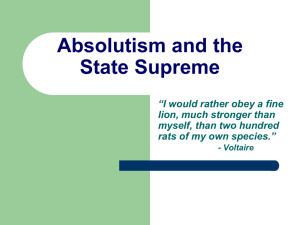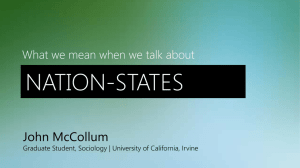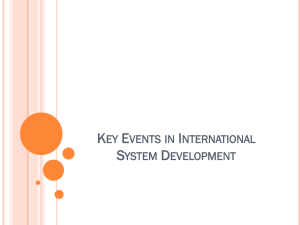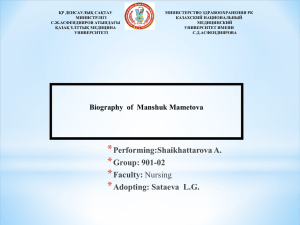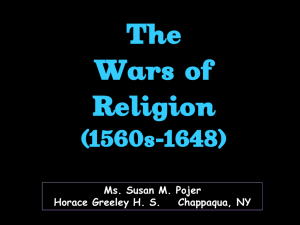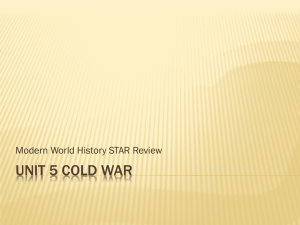The Historical Context of Contemporary International Relations
advertisement
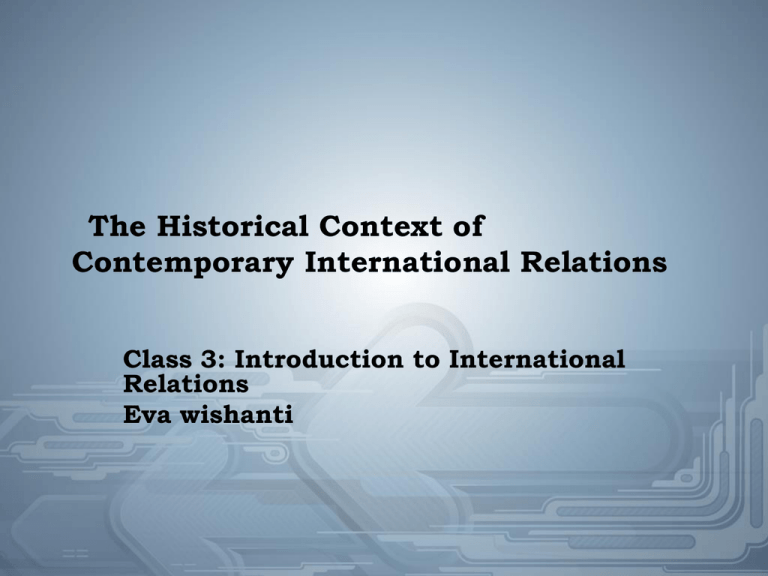
The Historical Context of Contemporary International Relations Class 3: Introduction to International Relations Eva wishanti Introduction International Relations (IR) After Two World Wars War Realism : state, power World Politics diversity Pluralism Six Periods of Historical Context of Contemporary International Relations 1. Before 1648 2. After Westphalia 3. Nineteenth Century Europe 4. Interwar Years 5. The Cold War 6. The Post-Cold War Periodisasi Sejarah Penting dalam HI History and Philosophy A Series of world events The world in the 21st century • Greek’s (political) philosophy • Renaissance • First World War • Second World War • Cold War • Changing world order • New challenges Before 1648: The Pre-Westphalian World • The Sovereignties of the Greek city-states (400 B.C.) • Imperialism by The Roman Empire (50 B.C – 400 A.D.) • Centralization & Decentralization in the Middle Ages (400 – 1000) Three civilizations: Arabic, Byzantine, Europe • The development of transnational networks in the Late Middle Ages (1000 – 1500) a. Transnational Business Community b. Individualist & Humanist c. Writers on Classic Literature Munculnya sistem Westphalia : Nation - States • Development of practical sovereignty Sovereignty by Jean Bodin: absolute and perpetual power • The Growth of Military Control The Thirty-years war ⇒ Treaty of Westphalia • The Emergence of Capitalist Economic System Adam Smith: Invisible Hand of the Market ⇒ Capitalism Europe in the Nineteenth Century • The Aftermath of Revolution: Core Principles - Legitimacy - Nationalism • Peace at the Core of the European System - Solidarity sharing among European - Fear of Revolution among independent states - Unification of Germany and Italy • Balance of Power Independent European states counteract predominant states • The Breakdown: Solidification of Alliances The end of Balance of Power system Interwar Years and World War II • Three Empires are Weakened Russia ⇒ New leader and new ideology Austro-Hungary ⇒ Replaced by new states Ottoman ⇒ Reconfigured and ousted from Europe • Fascism in Germany - Mobilized support from the masses - Superior civilization • The Weakness of League of Nations - Prevent all future wars - No political weight, legal instruments, legitimacy The Cold War • Origins of the Cold War - The emergence of two superpowers: United States and Soviet Union - The incompatibilities in national interests and ideology - The end of colonial system - The realization of indirectly conflict • The Cold War as a Series of Confrontations - High level tension with no military conflict - Confrontations between proxies - Confrontations between two blocs: NATO vs. Warsaw Pact • The Cold War as a Long Peace John Lewis Gaddis: to dramatize the absence of war between superpowers The Post-Cold War • • • • The Continuity of Glasnost and Perestroika in Soviet - Glasnost: Political Openness - Perestroika: Economic Restructuring Changes of Soviet Foreign Policy - Cooperate in multilateral activities to preserve regional security - Mark the post-Cold War era Iraq Invasion of Kuwait in 1990 - The test of New World Order - U.N. Security Council ⇒ Economic sanctions The Disintegration of Yugoslavia - Disintegrates into independent states - Bosnia-Kosovo civil war leading to U.N. and NATO action SUMMARY: Learning from History • How can we begin to predict what the current era is or what the future will bring? • How core concepts of international relations – the state, sovereignty, the nation, and the international system- have emerged and evolved over time?
